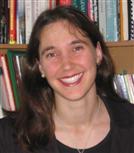Clare Sammells
ABD, Cultural Anthropology
University of Chicago

![]()
Curriculum Vitae
Research Projects
Resources for Students
Reference Bibliographies
(Hosted by www.citeulike.org)
This is a set of templates for Filemaker Pro 5 to help anthropologists and other ethnographers record, organize, and cross-reference fieldnotes. These are templates ONLY! You will need Filemaker Pro 5.0 or higher to use them, and it helps if you are familiar with the program.
This is a project in progress. You are welcome to use these
templates, and I welcome your suggestions about how to improve
them.
Templates for download:
YOU MUST DOWNLOAD ALL THESE FILES FOR ANTHROIDZ TO WORK PROPERLY. They are interrelated and not designed to be used alone.
Optional templates for download:
Anthroidz is a series of four interlocking files (and two additional optional ones). These four files work together so that the researcher can link files to each other as they collect data, i.e., connect a set of photos with a group of interviews, keep track of all the interviews or conversations with a particular individual, etc. They can also be password protected.
Each entry into each of these four files is given (as relevant):
1) A unique entry number (prefaced with INT, OBV, PART or PHOTO, depending on the file, and automatically entered)
2) Date entry was created and last modified (both automatically entered)
3) Date and time of Event
4) Participants involved (listed by unique PART numbers)
5) Links to related files with buttons to move easily between them
The four files are discussed separately below. For those interested in food, one can also add the template from the Wali Moxsa Project. And because this is a work in progress, there are also Quirks listed at the end.
This is the central file of the set, used for recording daily notes about events witnessed, casual conversations, observations, and passing thoughts. Each entry has a unique OBV number and a subject heading that allows it to be quickly recognized later.
Three “Value lists” which are common to all four files are kept within this file. If changed in this file, they will automatically be changed in the other three files (see Quirks!).
This file keeps track of people and the basic information known about them: name, age, gender, languages spoken, occupations, kinship ties, etc. The advantage of this system is that people are uniquely identified by a PART number, so that the researcher can distinguish individuals even when little information is known, or when the researcher does not wish to record it.
This file links to the other three files so the researcher can easily see which interviews the individual participated in, which photos he/she appears in, etc. Also, if one knows three or four individuals with the same name, one person with two nicknames, or a person who has changed names, unique numbers make clear which person is referred to. Information about whether the individual has given permission to participate in the study, or signed an IRB form, can also be kept.
In addition, this file can be put under a separate password from the other three, or backed-up separately, thus helping to keep personal information private.
There are two Value Lists specific to this file that can be modified only here:
This file is where formal and informal interview notes and transcriptions can be kept. Each entry is given a unique INT number. The researcher can note whether the interview was taped, where it occurred, etc. One can note the participants’ unique PART numbers so that the interview number for each file appears under their entry in the Participants File.
Also there is a Value List that can be modified to include different types of interviews: speeches at public events, oral histories, or interviews concerning particular topics.
This file works best for researchers with digital cameras. Photos are recorded in sets (either photos taken together in a single place, or thematically linked) assigned unique PHOTO numbers. Photos can be filed individually or in groups, for example, The Festivities of San Pedro. Photos can appear in multiple entries.
If the camera assigns a unique number to each photo, these numbers can be entered under Photograph Files. These templates are not designed to import the photos into Filemaker; instead, they act as a database to enable the researcher to easily find a particular photo among the numerous images collected during fieldwork.
The participants appearing and related observations and interviews are also noted here, causing the Photo Set number and subject to appear under those files. An observations file within Anthroidz_photos allows the research to note details about particular photos for later reference.
The “Wali Moxsa” Project (“Delicious” or “Sweet” in Aymara) is a collaboration between anthropological investigators working in altiplano Bolivia. By keeping detailed, daily food dairies we hope to compare trends in eating habits among specific Bolivian populations. Given the enormous changes that local people report experiencing over past decades in their eating habits, and the well-known difficulties surrounding collecting accurate information about foodways, we hope that this careful and comparative ethnographic study will illuminate trends that otherwise might go unlooked. In addition, we record the social aspects of food preparation, distribution, and consumption.
For those interested in collecting similar information, one can download the Wali Moxsa templates (and can modify them to suit other regions). Specific food events can then be linked via their unique numbers to observations in the Anthroidz_observations file.
These templates are far from perfect. There are some bugs that still have to be ironed out, and that you should keep in mind if you intend to use them. If you know how to fix these, please let me know!